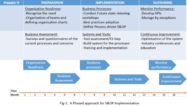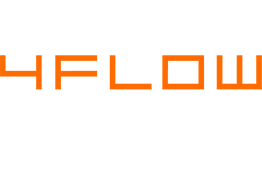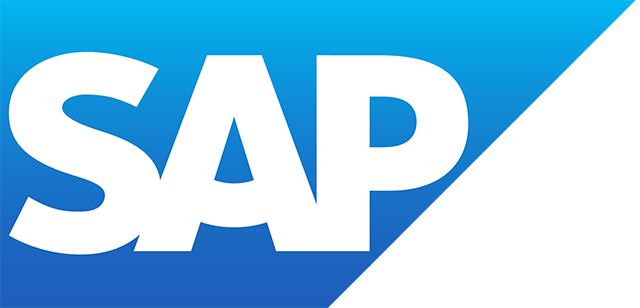SAP S&OP
Filter By
Browse By
- SAP Analytics and AI
- SAP Application Development and Integration
- All SAP Application Development and Integration
- SAP ABAP
- SAP ABAP Development Tools
- SAP ABAP Test Cockpit
- SAP API Management
- SAP BAPI
- SAP Basis
- SAP BRF
- SAP Business Application Studio
- SAP CMS
- SAP Design Studio
- SAP Development Tools
- SAP DevOps
- SAP EAI
- SAP EDI
- SAP Extension Suite
- SAP Fiori
- SAP Fiori Elements
- SAP Integration Suite
- SAP Low Code Application Development
- SAP Low Code Automation
- SAP Netweaver
- SAP Release Management
- SAP UI5
- SAP Web Application Server
- SAP Web IDE
- SAP Business Process Management
- SAP Center of Excellence
- SAP CIO
- SAP Customer Experience
- SAP Data and Data Management
- All SAP Data and Data Management
- SAP BW
- SAP BW/4HANA
- SAP Crystal Reports
- SAP Data Archiving
- SAP Data Center
- SAP Data Governance
- SAP Data Integration
- SAP Data Migration
- SAP Data Quality
- SAP Data Services
- SAP Data Strategy
- SAP Data Visualization
- SAP Data Warehouse Cloud
- SAP DMS
- SAP Document Control
- SAP EIM
- SAP ETL
- SAP ETL Tools
- SAP HANA
- SAP HANA Administration
- SAP HANA Deployment Infrastructure
- SAP HANA Studio
- SAP Master Data
- SAP Master Data Governance
- SAP MDM
- SAP Enterprise Architect
- SAP Enterprise Asset Management
- SAP ERP
- SAP Finance
- All SAP Finance
- SAP Accounting
- SAP AR AP
- SAP Asset Accounting
- SAP Billing Systems
- SAP BPC
- SAP BRIM
- SAP Cash Management
- SAP Central Finance
- SAP Controlling
- SAP COPA
- SAP Cost Center Accounting
- SAP e-invoicing
- SAP FICO
- SAP Finance Automation
- SAP Financial Closing Cockpit
- SAP Financial Consolidation
- SAP Financial Planning
- SAP FX Risk
- SAP General Ledger
- SAP Global Tax Management
- SAP Hyperion
- SAP Order to Cash
- SAP Payment Processing
- SAP Profitability Analysis
- SAP Rebate Management
- SAP S/4HANA Finance
- SAP Universal Journal
- SAP Governance Risk and Compliance
- SAP Human Capital Management
- SAP Intelligent Technologies
- SAP Platform and Technology
- All SAP Platform and Technology
- SAP Business Technology Platform
- SAP Cloud Connector
- SAP Cloud Integration Platform
- SAP Cloud Migration
- SAP Cloud Platform
- SAP Cloud Providers
- SAP Cloud Strategy
- SAP Container Platform
- SAP Digital Asset Management
- SAP Digital Integration Hub
- SAP Digital Signature
- SAP HANA Enterprise Cloud
- SAP HEC
- SAP Hyperscalers
- SAP Infrastructure
- SAP Messaging
- SAP Smart Forms
- SAP Quality and Testing
- SAP Security
- SAP Spend Management
- SAP Supply Chain Management
- All SAP Supply Chain Management
- SAP APO
- SAP Asset Management
- SAP Business Network
- SAP Digital Manufacturing Cloud
- SAP Digital Twin
- SAP EWM
- SAP IBP
- SAP Inventory Management
- SAP Label Printing
- SAP Logistics
- SAP Manufacturing
- SAP Manufacturing Automation
- SAP MES
- SAP MII
- SAP MM
- SAP MRO
- SAP MRP
- SAP Order Management
- SAP Plant Maintenance
- SAP PLM
- SAP Production Planning
- SAP S&OP
- SAP SD
- SAP SPM
- SAP Supply Chain Planning
- SAP Track and Trace
- SAP Transportation Management
- SAP System Administration
What Is Sales and Operations Planning?
By integrating the operational areas of the business (e.g., sales, marketing, procurement, manufacturing, etc.), Sales and Operations Planning (S&OP) ensures monthly alignment with the enterprise’s supply, demand, and finance planning needs. Effective and efficient supply chain management relies on a well-orchestrated and executed S&OP process.
Execute S&OP with SAP Integrated Business Planning
SAP provides S&OP planning as part of SAP Integrated Business Planning to drive revenue growth, reduce inventory carrying costs, and increase productivity. Key capabilities include:
What Is Sales and Operations Planning?
By integrating the operational areas of the business (e.g., sales, marketing, procurement, manufacturing, etc.), Sales and Operations Planning (S&OP) ensures monthly alignment with the enterprise’s supply, demand, and finance planning needs. Effective and efficient supply chain management relies on a well-orchestrated and executed S&OP process.
Execute S&OP with SAP Integrated Business Planning
SAP provides S&OP planning as part of SAP Integrated Business Planning to drive revenue growth, reduce inventory carrying costs, and increase productivity. Key capabilities include:
• Enable real-time planning
• Simulate and compare scenarios
• Collaborate across departments
• Monitor performance and future alignment
Key Considerations for SAPinsiders
- Operational Excellence: Achieving S&OP Success. Watch this on-demand webinar to take your S&OP process to the next level. Often, companies lack end-to-end supply chain integration because of functional silos and poor executive support within their current S&OP process. Alex Kahsar, Senior Solution Advisor for GIB USA, leads the discussion to showcase the benefits of an S&OP process that is capable of operating inside a core SAP ERP system, while also simplifying and optimizing supply chain execution. Too often, SAP users resort to a patchwork of disparate solutions to solve various use cases, creating complex, brittle connections, which prevent organizations from adapting to future business changes.
- 5 Steps of S&OP to Achieve an Integrated Business Plan. In this article, learn the framework and five essential steps of the S&OP process: 1) data gathering, 2) demand planning, 3) supply planning, 4) pre-S&OP meeting, and 5) executive S&OP. Venkata Ramana Nethi, CSCP, CPIM, MGR IT Build-Run Operations & Quality, Schlumberger, writes that the “S&OP concept and methodology, regardless of industry, has been around since the 1980s; however, with new advances in technology it has become more transparent and agile, adopting and delivering nearly accurate results in dynamic environments to achieve balance.”
- 7 Questions to Guide You on Your S&OP Transformation. In this blog post, explore a series of seven questions that can help business stakeholders uncover the root causes of the issues in an S&OP strategy and determine ways to fix them. By answering these questions carefully and in order, an organization can craft an effective S&OP strategy.
Vendors in the S&OP space include: Innovation Enterprise and OpsVeda.
52 results
-

 Premium
Premium
Advanced Demand Planning with S&OP and SAP HANA
Reading time: 20 mins
Learn how to meet the challenges of integrating SAP Advanced Planning and Optimization (APO) statistical forecasting with SAP Sales and Operations Planning (S&OP) and SAP HANA. Key Concept SAP Sales and Operations Planning (S&OP) is a solution powered by SAP HANA that supports an organization’s end-to-end sales and operations planning business process. In SAP S&OP,...…
-

5 Steps of S&OP to Achieve an Integrated Business Plan
Reading time: 14 mins
Sales and operations planning (S&OP) is a set of decision-making processes that regulate and coordinate overall capacity, inventory levels, and lead times across engineering, projects, manufacturing, finance, supply chain, and operations based on forecast information about the market. S&OP focuses on changes from the previous plan and links that with the strategic goals of cost…
-

SAP Integrated Business Planning for Sales and Operations: Q&A on How to Optimize Demand and Supply Planning and Increase Profitability
Reading time: 24 mins
When it comes to your supply chain, accuracy, efficiency, swift and informed decision making, and timely responses and adjustments to market and business changes are critical — but a lack of communication between sales, marketing, finance, and operations can be a significant impediment to these goals. The ability to effectively and simultaneously evaluate data from...…
-
-

 Premium
Premium
Best Practices for Implementing Sales and Operations Planning
Reading time: 14 mins
The sales and operations planning (S&OP) process can bring about substantial improvements in the way a company manages its supply chain. Learn the building blocks of the S&OP process, what it needs in terms of technology, and how this is supported in different SAP solutions. Key Concept Sales and operations planning (S&OP) is the process...…
-

Achieve Excellence in Sales and Operations Planning
Reading time: 19 mins
Sales and operations planning (S&OP) functions live at the tactical level of the planning hierarchy in an environment that synchronizes demand, inventory, and supply plans and considers profit objectives. S&OP has been discussed in multiple forums over the years because of the value it delivers to the organization as whole. In this article you will…
-

How to Build a Resilient and Efficient Supply Chain With Robust Sales and Operations Planning Using SAP IBP S4HANA
Reading time: 9 mins
Sales and operations planning (S&OP) helps companies estimate the demand for their products/services at an aggregate volume level using some form of forecasting method and incorporating inputs from the sales and marketing teams. Many organizations, in their race to embrace technology, ignore a key ingredient for the successful implementation of their S&OP: organizational readiness. Drawing…
-

7 Questions to Guide You on Your S&OP Transformation
Reading time: 3 mins
For many businesses, getting sales and operations planning (S&OP) right is a critical step toward success. S&OP processes are responsible for cutting down waste and optimizing your organization’s resources. But for too often, S&OP falls short of expectations. Why does this happen – and what can you do to fix it? Every organization will answer…
-
-

- SAP Financial Planning
 Premium
Premium
What Is xP&A Exactly and How Does it Relate to S&OP?
Reading time: 5 mins
Business executives are desperately grasping for a solution that will help them prevent a repeat of the previous few years’ supply chain insanity. The first truth to reveal is that there is no “one size fits all” answer or “silver bullet” solution or magic pixie dust to sprinkle on and solve all aspects of this…
-

Not Your Same Old Advanced Planning System Implementation!
Reading time: 18 mins
Panelists: Robert Birdsall and Ryan Rickard, SCMO2 Date: September 6 Sponsor: IBP Bootcamp and SCM 2018 Gone are the days of engaging a System Integrator and waiting nine to twelve months for the first in a series of rollouts. With today’s cloud platform, and specifically SAP Integrated Business Planning (SAP IBP), the platform is upgraded...…
-

Streamlining Global S&OP with SAP IBP
Reading time: 2 mins
A global advanced materials leader improved its manufacturing operations and unified its Sales & Operations Planning processes by implementing SAP Integrated Business Planning, resulting in enhanced efficiency, better inventory control, and increased profitability through real-time analytics and standardized workflows.
Featured Insiders
-

Rohana Gunawardena
Director - SAP Practice, Exium Inc.
-

Jay Foster
Global Director, Solution Management, Supply Chain Planning at SAP
-

Marc Hoppe
Manager SCM, SAP Deutschland Gmbh & Co KG
Become a Member
Unlimited access to thousands of resources for SAP-specific expertise that can only be found here.
Become a Partner
Access exclusive SAP insights, expert marketing strategies, and high-value services including research reports, webinars, and buyers' guides, all designed to boost your campaign ROI by up to 50% within the SAP ecosystem.
Upcoming Events
Related Vendors
Your request has been successfully sent


